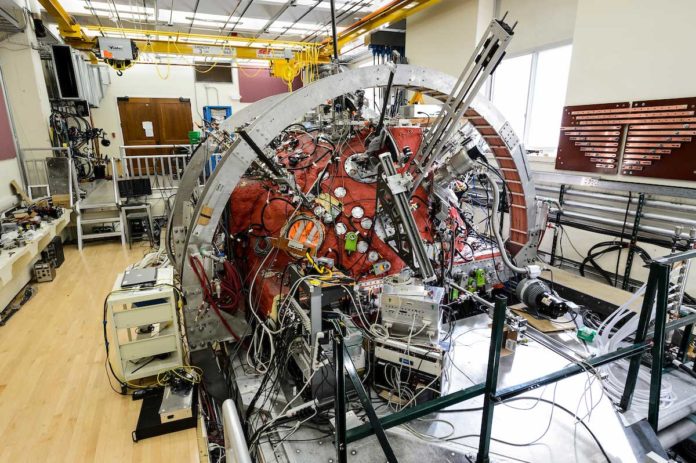Many turning stars have magnetic fields that interact with the winds they produce. The Sun is no particular case. The collaboration between the Sun’s magnetic field and the solar wind offers to ascend to the heliospheric magnetic field—a spiraling magnetic structure known as the Parker spiral, which pervades the Solar System. This magnetic field is critical for administering plasma processes that source the solar wind.
In a new study by the University of Wisconsin–Madison, physicists report the creation of a mini sun, a laboratory model of the Parker spiral system based on a rapidly rotating plasma magnetosphere and the measurement of its global structure and dynamic behavior.
Physicists might not have direct access to the big plasma ball of the sun. However, they do have access to the following best thing: the Big Red Ball.
The Big Red Ball is a three-meter-wide hollow sphere with a strong magnet in its middle and different probes inside. The specialists siphon helium gas in, ionize it to create a plasma, and after that apply an electric flow that, alongside the magnetic field, stirs the plasma, making a close ideal copy of the spinning plasma and electromagnetic fields of the sun.
With their mini sunset up, the physicists can take estimations at numerous points inside the ball, enabling them to study solar phenomena in three dimensions.
To start with, they had the option to reproduce the Parker Spiral, a magnetic field that fills the entire solar system named for the scientist who initially depicted its structure. Beneath the Alfvén surface, the magnetic field transmits straight out from the Sun. Be that as it may, at that surface, solar wind dynamics take over, hauling the magnetic field into a spiral.
Ethan Peterson, a graduate student in the Department of Physics at UW–Madison, said, “Satellite measurements are pretty consistent with the Parker Spiral model, but only at one point at a time, so you’d never be able to make a simultaneous, large-scale map of it like we can in the lab. Our experimental measurements confirm Parker’s theory of how it is created by these plasma flows.”
Physicists also identified that the sun’s plasma burps fuel the slow solar wind. With the plasma spinning, they probed the magnetic field and the speed of the plasma. Their data mapped a region where the plasma was moving fast enough, and the magnetic field was weak enough that the plasma could break off and eject radially.
Peterson said, “These ejections are observed by satellites, but no one knows what drives them. We ended up seeing very similar burps in our experiment and identified how they develop.”
“Our work shows that laboratory experiments can also get at the fundamental physics of these processes. And because the Big Red Ball is now funded as a National User Facility, it says to the science community: If you want to study the physics of solar wind, you can do that here.”
Although, physicists stress that their Earth-bound experiments complement, but don’t replace, satellite missions. For example, the Parker Solar Probe, launched in August 2018, is expected to reach and even dip below the Alfvén surface. It will provide direct measurements of solar wind never obtained before.
The study is published online July 29 in Nature Physics.
